February 2, 2010
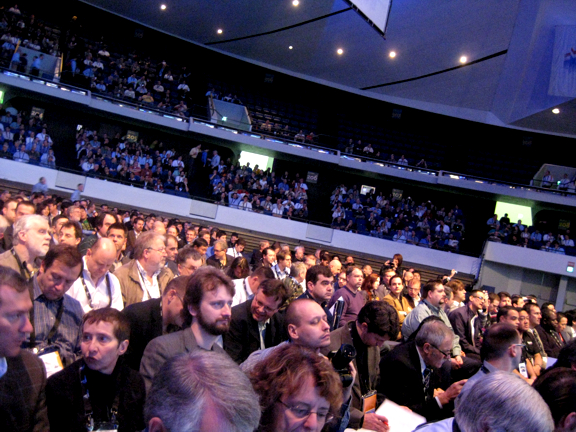
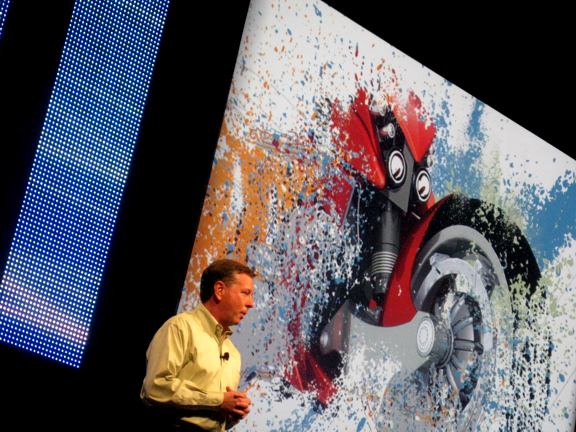
At 8 AM on Monday morning, SolidWorks CEO Jeff Ray took the stage inside the 7,500-seat arena at Anaheim Convention Center, to be greeted by an an estimated 5,000 SolidWorks fans. Two quarters into the breakout session, he revealed what SolidWorks users could expect to take advantage of in the not-so-distant future: “things like cloud and online computing, things like multi-touch devices ... netbooks, mobile [devices], and Mac—yes, Mac!”
Clearly, he hit a nerve. The spontaneous applause that erupted in the audience was louder and longer than the initial one he received when he first walked in.
What About Mac?
Earlier, as Ray shared the stage with Dassault Systemes CEO Bernard Charles (“my boss,” as Ray called him), a mysterious machine sat on the podium, shrouded in mystery. When the time came, Ray literally unveiled a Mac, prompting a few gasps and a round of cheers from the audience.
The demo that followed showed a newer version of SolidWorks (sporting an interface that’s significantly different from current versions in the market) running in Mac OS. It wasn’t immediately clear if the prototype software code was written to run on Mac hardware in Mac OS as a native application, or if it was hosted on a remote server and made available via Internet protocols.
Later, Joe Dunne, SolidWorks’ director of technical marketing, confirmed, “We’re working on several concepts. One of the concepts is definitely running SolidWorks as a native Mac app, in addition to the no-install (browser-based) version ... So you can run it on a Mac or run on a Mac machine using a browser—take your pick.”
By definition, cloud computing solutions don’t rely on a user’s hardware or OS to deliver the required functions (hence the popular term Software as a Service). A web-hosted CAD modeler is bound to be accessible to both Windows and Mac users, but addressing the demand for Mac-compatible CAD in such a fashion may not fully satisfy dedicated Mac fans, because this approach doesn’t take advantage of Apple’s hardware and OS.
Note: After this post was published, SolidWorks cautioned it had no specific time frame for delivering a version of SolidWorks that would run in Mac OS. For more, read “SolidWorks: Exploring Mac OS But No Timetable for Delivery,” Feb 22, 2010.
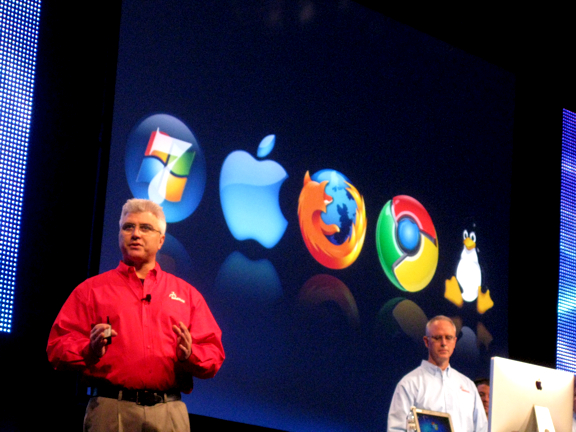
Going from Desktop to Cloud in Three Years
As Ray recalled, three years ago, he issued a mandate to the SolidWorks research and development (R&D) team. “I want you to get us ready, to be able to provide a technology preview to our customers to show them how these new technologies [cloud computing, mobile devices, touch-sensitive devices, Mac] will help them solve their everyday problems ... things that drive you nuts, like installs and updates, speed and reliability.” The first tangible proof of things to come, Ray estimated, would a “cloud-based product that starts shipping later this year.”
Oleg Shilovitsky, who maintains the Daily PLM Think Tank blog (focuses on product lifecycle management), pointed out, “Computational problems could no longer be solved just by increasing hardware, so renting computational power [delivered] in the cloud and paying for the time you use it” may emerge as one of the business model among productivity software providers.
Though most mid-range and high-end MCAD programs today offer stress analysis and some simulation features, users tend to perform these operations judiciously because of the drain of computing power associated with them. “But if the cost of computational power is cheap, it could change the way we think about these [higher-end] computing functions,” Shilovitsky pointed out.
Cloud computing promises computing-intense operations (analysis, rendering, and simulation, for example) could be made available for micro payment, with no additional hardware investment other than a standard browser. When this practice becomes widespread, as Shilovitsky predicted, users may not think twice about running an analysis or simulation session.
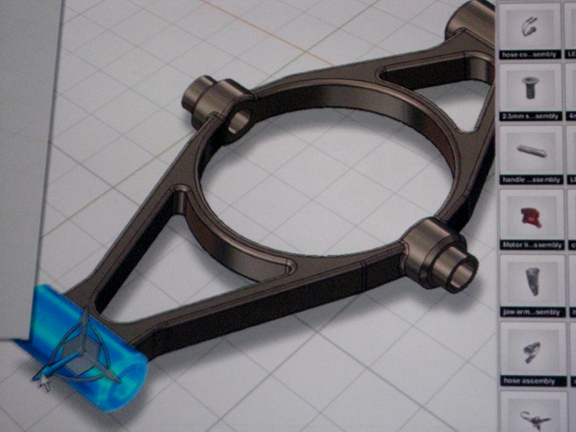
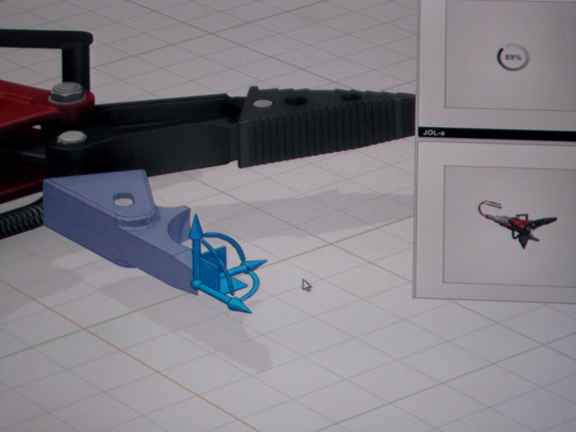
Joining the March Towards Direct Modeling
On stage, during the preview, SolidWorks’ R&D team impressed the audience with dynamic modeling and editing capabilities that went far beyond what was currently possible with SolidWorks Instant3D. Dunne said, “We’re looking at combining direct modeling and parametric editing ... everyone has their own approach to it. What they didn’t do is write from scratch. We decided that’s what we’re going to do in ours.”
Dunne wasn’t prepared to go into greater details about how the new modeling approach might work with the modeling kernel SolidWorks currently uses.
In the last three to four years, SolidWorks has remained quiet on its strategy on direct modeling while its competitors roll out a series of products and proofs of concept to address this (most notably, Autodesk’s Inventor Fusion and Siemens PLM Software’s Synchronous Technology).
News of SolidWorks’ exploration of direct modeling may come as a relief to some users who see this method as an easier, faster way of working. On the other hands, hardcore parametric modeling fans may treat this with some concerns. Either way, as more vendors have begun embracing direct modeling, SolidWorks has little choice but to join the race, or risk becoming a latecomer.
For more photos from the conference, visit Desktop Engineering’s Facebook fan page.
For more on the conference, read “Part Two: SolidWorks PLM, by way of 3DVIA and ENOVIA.”
For my interview with stereoscopic display technology developer Infinite Z, conducted on behalf of SolidJott, watch the YouTube clip below:
More reports from the show floor coming later.
Subscribe to our FREE magazine, FREE email newsletters or both!
About the Author
Kenneth Wong is Digital Engineering’s resident blogger and senior editor. Email him at [email protected] or share your thoughts on this article at digitaleng.news/facebook.
Follow DE





